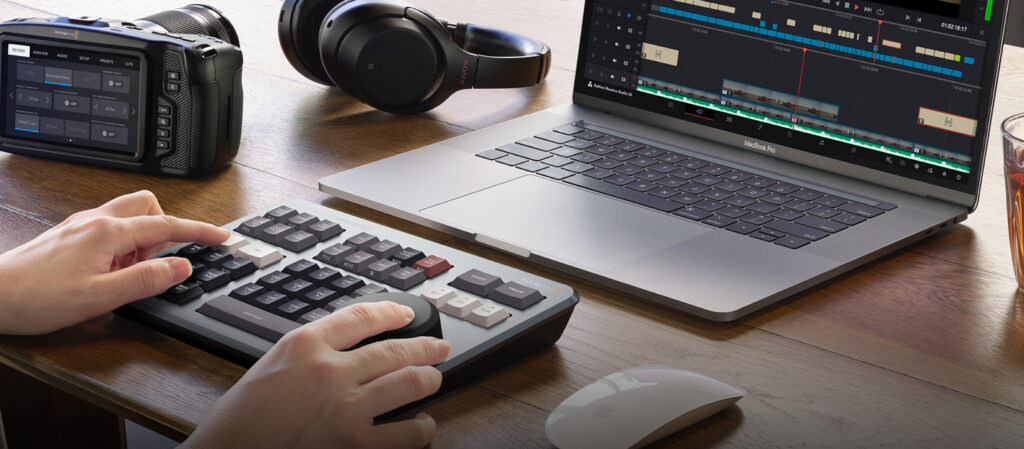Artificial intelligence (AI) is profoundly transforming traditional video production across the entire pipeline—from ideation and scripting to filming, editing, and distribution. By automating time-consuming tasks and enabling new creative possibilities, AI is reshaping how videos are made, making production faster, more accessible, and scalable. This article dives deep into how AI technologies are disrupting the traditional video production process, enabling professionals and creators alike to tell stories with greater speed and efficiency.
Table of Contents
The Traditional Video Production Process: Challenges and Limitations
Traditional video production is a complex, labor-intensive process divided into three main phases: pre-production, production, and post-production. Each phase presents logistical and financial challenges:
-
Pre-production: involves scripting, storyboarding, planning schedules, and coordinating teams, often requiring significant time and expertise.
-
Production: requires skilled crews, specialized equipment, lighting, and sound expertise, resulting in high costs and complex logistics.
-
Post-production: includes painstaking editing, color correction, sound design, and adding visual effects, typically demanding hours of manual labor by professionals.
These constraints limit creativity and scalability, especially for smaller creators or marketing teams with limited budgets.
AI Transforming Pre-Production
AI enhances pre-production by automating planning, script development, and asset management:
-
Content Planning: AI analyzes past video performance data to suggest content strategies and budget planning, optimizing resource allocation.
-
Scriptwriting: AI-powered tools generate or assist in script creation using natural language processing, ensuring brand-consistent tone and pacing for videos.
-
Asset Organization: AI helps manage video assets, generate shot lists, scout virtual locations, and even assist with AI-driven casting decisions.
This automation reduces lead times and allows creators to focus on creativity instead of logistics.
Enhanced Production Through AI
AI assists during video filming and recording via:
-
Real-time Quality Monitoring: AI algorithms suggest optimal camera angles, lighting adjustments, and sound enhancements during shoots.
-
Virtual Production: AI enables real-time green screen replacement, virtual sets, and the generation of digital characters which reduce physical set requirements.
-
Resource Forecasting: AI predicts scheduling needs and equipment usage, reducing downtime and costs.
These tools empower smaller teams to achieve production quality once accessible only to larger studios.
Revolutionizing Post-Production: Editing and Visual Effects
Post-production benefits immensely from AI-driven automation:
-
Automated Editing: AI scans raw footage to identify the best shots, trim clips optimally, and suggest seamless transitions, making editing faster and accessible to creators regardless of skill level.
-
Aspect Ratio Adjustments: AI tools like Adobe’s Auto Reframe adapt videos for different platforms automatically.
-
Visual Effects (VFX): AI generates realistic special effects such as fire, smoke, explosions, and background removal with minimal manual input, making Hollywood-level production effects accessible to indie filmmakers.
-
Audio Enhancements: AI removes background noise, adjusts audio levels, and enhances sound quality automatically.
-
Captioning and Localization: AI can generate subtitles, voiceovers, and even multi-language versions, expanding audience reach.
Together, these capabilities reduce post-production timelines from days or weeks to hours.
Creativity and Scalability: AI’s Trade-Offs and Advantages
While AI accelerates production and reduces costs, some note limitations such as:
-
Creative Nuance: AI may lack the artistic intuition and emotional depth that human editors and directors bring to video.
-
Customization Limits: AI video tools may offer fewer options for intricate, bespoke creative choices compared to traditional manual editing.
However, the scalability benefits are significant. AI enables rapid creation of multiple videos across platforms, consistent branding via AI avatars and automated workflows, and democratizes high-quality video making for businesses of all sizes.
Use Cases and Industry Impact
-
Marketing: AI-powered video tools help marketers produce personalized content quickly, reaching diverse audiences with tailored messaging and dynamic storytelling.
-
Independent Creators: AI editing and scriptwriting tools lower barriers, enabling solo creators to compete with larger productions.
-
Entertainment: Virtual sets and AI-generated characters open new avenues for creative expression and cost savings.
-
Global Reach: Automated translation and dubbing foster multilingual content production for international markets.
Future of AI in Video Production
Expect continual advancement in AI capabilities like:
-
More sophisticated deepfake and face-swapping technologies.
-
Real-time AI production assistants that enhance creativity on set.
-
Integration with emerging tech like augmented reality (AR) and virtual reality (VR).
-
Enhanced emotional and narrative AI that tailors stories dynamically to viewer preferences.
Conclusion
AI is redefining the video production landscape by transforming workflows, reducing costs, and expanding creative horizons beyond traditional limits. As AI-powered tools become more sophisticated and accessible, they will empower creators to focus on storytelling while leaving tedious tasks to intelligent automation—truly going beyond the lens.
FAQs About AI in Video Production
Q1: How does AI speed up video editing?
AI automatically analyzes footage to select the best shots, trim clips, and apply transitions, reducing the hours traditionally spent on manual editing.
Q2: Can AI replace human creativity in video making?
AI complements but does not fully replace human creativity. It automates routine tasks but lacks the nuanced artistic sense humans provide.
Q3: What are the cost benefits of AI in video production?
AI reduces the need for large crews and expensive equipment by automating many labor-intensive processes, making video production cost-effective for smaller teams.
Q4: Are AI-generated videos suitable for marketing?
Yes, AI enables rapid creation of personalized and localized marketing videos, helping brands reach wider audiences efficiently.
Q5: What are the main limitations of AI video tools?
Current AI tools may offer less creative control and artistic nuance compared to traditional methods. AI output quality also depends on input data and tool sophistication.
Q6: How is AI changing the visual effects (VFX) process?
AI can generate realistic effects like fire, smoke, and explosions automatically, drastically reducing the expertise and time traditionally required.

